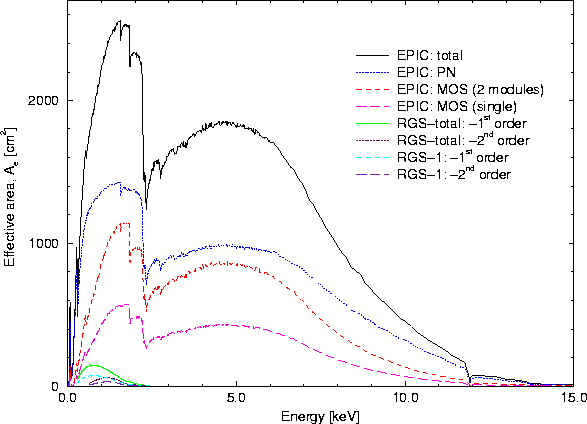 |
XMM's on-axis effective area of all three mirror modules combined, in comparison with the total effective mirror area of a few other X-ray missions, is shown in Figs. 10 and 11. One can see that the XMM mirrors are most efficient in the energy range from 0.1 to 10 keV, with a maximum at about 1 keV and a pronounced edge near 2 keV (the Au M edge). A tabular comparison of the XMM mirrors' properties with those of other X-ray satellites is provided in Tab. 20 (§ 3.7).
 |
 |
The most important information for XMM users is the mirror effective area, folded through the response of the different focal instruments. These are shown in Figs. 12 and 13. Note that throughout the UHB we show EPIC effective area calculations with the thin filter in place, which will probably be the most commonly used filter (except for stellar observations). The effective areas of the two MOS cameras are lower than that of the pn, because only part of the incoming radiation falls onto these detectors, which are partially obscured by the RGAs (Fig. 3).
 |
 |